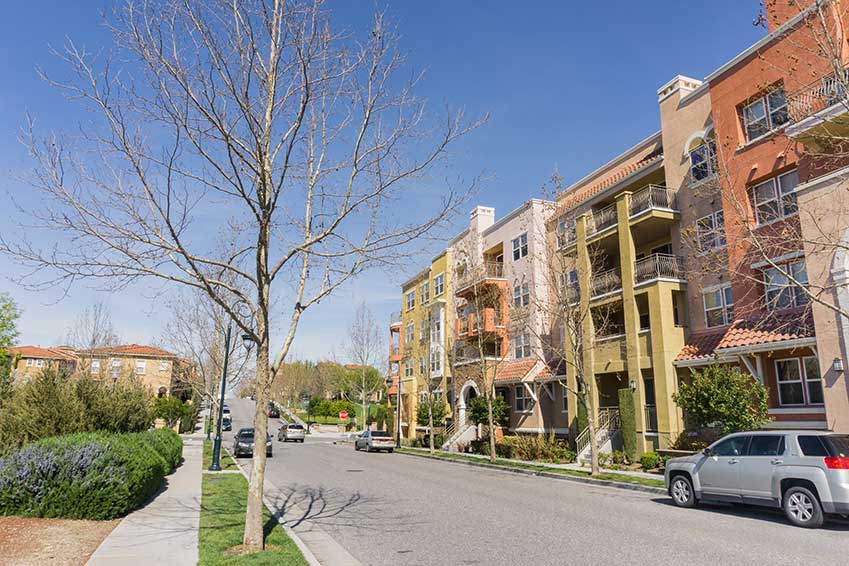The Math Behind Commercial Mortgage Underwriting
There are several important numerical calculations that commercial mortgage underwriters use when determining if they can approve a commercial mortgage loan request. It is important for borrowers to understand these calculations.
Loan-To-Value Ratio: the loan-to-value ratio is probably the easiest of these calculations. It represents the loan amount divided by the value of the property. For example, if the loan request is $1,000,000, and the value of the property is appraised at $1 million, the LTV is 75%. The loan-to-value ratio is calculated after a formal appraisal is completed using the actual appraised value and not an estimated value upfront. It is important to realize that a borrower’s estimated value or a seller’s asking price may be higher or lower than the actual appraised value. All lenders have a maximum loan-to-value ratio that they will use in determining the amount that they will be willing to lend. Commonly, the maximum LTV for an apartment loan will be 75 to 80%. The maximum LTV on a commercial property will typically be 70 to 75%. An owner occupied property might qualify for up to 90 to 100% financing using an SBA loan.
Debt-Service-Coverage Ratio: the debt-service-coverage ratio is often misunderstood. The DSCR is calculated by dividing a property’s annual net operating income (NOI) by its annual debt service (ADS) of the mortgage (P+I payments). Take the following property as an example - apartment building has net operating income (income minus expenses) of $125,000 per year. The proposed mortgage payments for the year total $100,000. This property operates positively with $25,000 of cash flow after the debt service. If you divide $125,000 by $100,000, the result is 1.25. This represents a debt-service-coverage ratio of 1.25. It means that the property has a 25% “cushion” or profit margin for the owner. The debt-service-coverage ratio is calculated after all expenses, including: management fees, vacancy factors and repair allowances. Most lenders will expect to see a debt-service-coverage ratio 1.20 or higher on apartment buildings and 1.25 or better on commercial properties.
Capitalization or “CAP” Rate: a CAP rate is the rate of return an investor expects as a return on his money. If an investor invests in a bank deposit that pays 1% interest, this would represent a “1 CAP” or 1% return. If an investor buys a commercial property for $1 million in cash, and the property generates a return of $80,000 cash, the property would have an “8 CAP” or 8% return on cash ($80,000 divided by $1,000,000 equals .08 or 8%). The CAP rate used or requested will determine the value of the property. In the above example, if an investor wanted a return of 10% on his money or a “10 CAP”, that same property would need to sell for $800,000 to generate a 10% return for the owner ($80,000 divided by $800,000 equals .10 or 10%). If the investor was willing to accept a 5% return on investment, or “5 CAP”, that same property would now be worth $1,600,000 ($80,000 divided by $1,600,000 equals .05 or 5%). Again, a very low CAP rate means that the owner will make a very low return on his investment. These examples show how the CAP rate determines the value of commercial real estate. The higher the CAP rate, the lower the value. The lower the CAP rate, the higher the value. It is very important for a property buyer or owner to understand the CAP rates for his property type and his property location upfront. Sellers often try to sell with a very low CAP rate. Buyers often look for a very high CAP rate. Lenders and appraisers are often somewhere in the middle. If a property is for sale with a 5 CAP and the lender has a minimum requirement of a 6 CAP, the property price will need to be lower or the buyer may need to put additional cash down to complete the purchase.
The Loan-To-Value Ratio, Debt-Service-Coverage Ratio and the Capitalization Rate all need to be calculated on every commercial mortgage loan transaction. All of the resulting numbers must meet the requirements of a lender and commercial mortgage loan underwriter. A property might have an acceptable loan-to-value ratio but might not have a debt-service-coverage ratio or CAP rate which is acceptable to the lender. It is important to have your commercial mortgage broker calculate all of these numbers upfront prior to presenting your loan package to a lender for funding. Accurately presenting and understanding these numbers will make the difference between a loan approval and a loan rejection.


